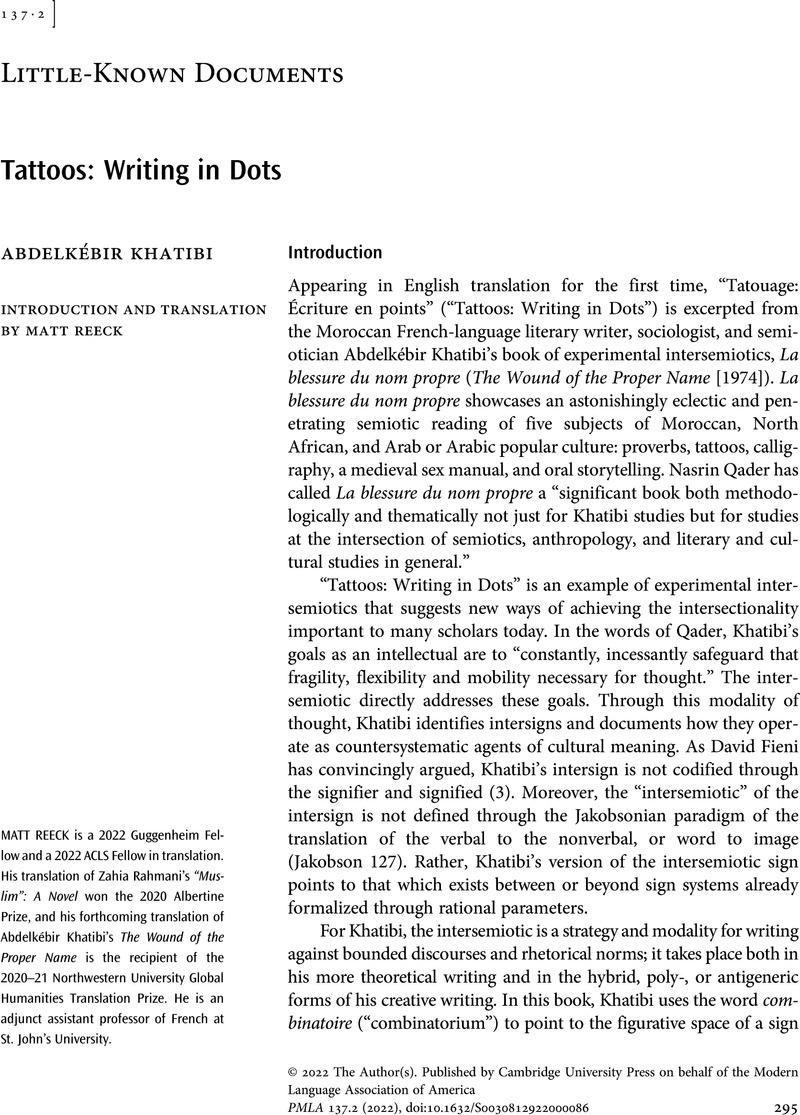No CrossRef data available.
Article contents
Tattoos: Writing in Dots
Published online by Cambridge University Press: 25 May 2022
Abstract
An abstract is not available for this content so a preview has been provided. Please use the Get access link above for information on how to access this content.

Information
- Type
- Little-Known Documents
- Information
- Copyright
- Copyright © 2022 The Author(s). Published by Cambridge University Press on behalf of the Modern Language Association of America
References
Works Cited
Fieni, David. “Introduction: Désappropriation de soi et poétique de l'intersigne chez Khatibi.” Expressions maghrébines, vol. 12, no. 1, 2013, pp. 1–17.Google Scholar
Jakobson, Roman. “On Linguistic Aspects of Translation.” Translation Studies Reader, edited by Venuti, Lawrence, 3rd ed., Routledge, 2012, pp. 126–31.Google Scholar
Khatibi, Abdelkébir. “Abdelkébir Khatibi: Il faut s'essayer à une double critique permanente.” Interview by Daoud, Zakya. Lamalif, vol. 57, Feb. 1973, pp. 32–34.Google Scholar
Qader, Nasrin. “Book Launch - Edited Volume - Abdelkébir Khatibi - March 16, 2021.” YouTube, 19 Mar. 2021, www.youtube.com/watch?v=o6SLPaanVXk.Google Scholar

